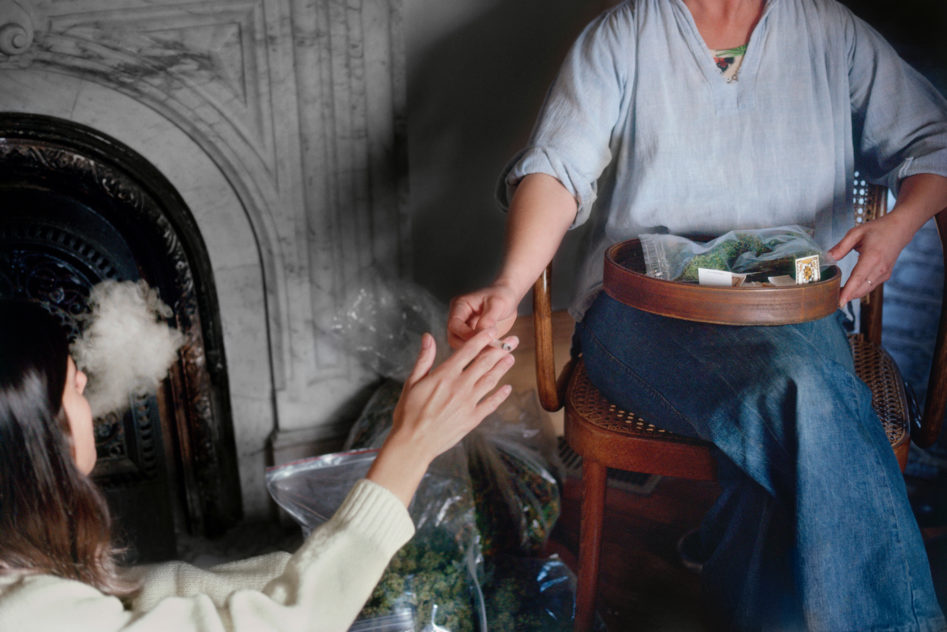“My method of intake is smoking a joint that I rolled,” says Mel Frank, the super-chill, 73-year-old ‘godfather of marijuana growers’ over the phone from his home in Los Angeles. “I like to roll myself because I know what I’m smoking. When you smoke a joint you get the full effects; the taste, the fragrance.”
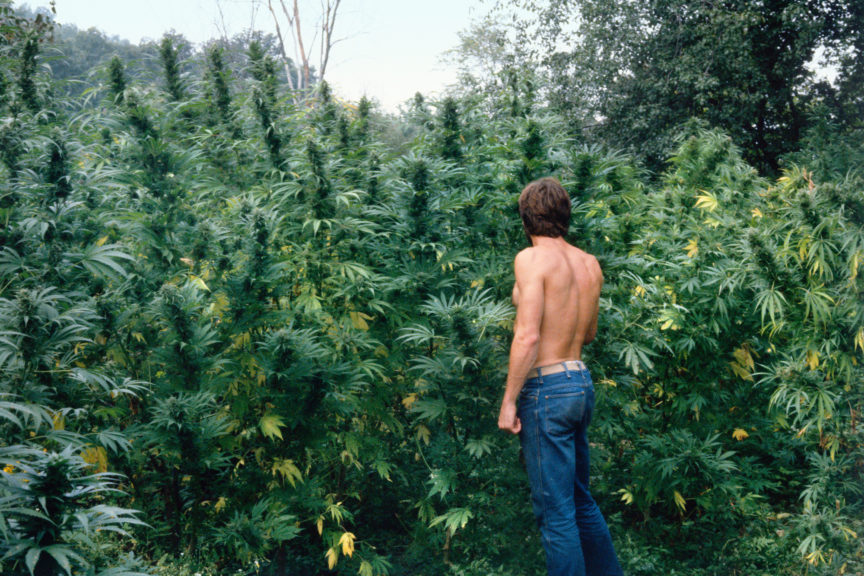
Afghani1/Congolese backcrossed Afghani1, NY, 1982 by Mel Frank
Mel Frank is not the man-the myth’s “government” name; it’s a pen name of sorts. It’s also a requisite alias, considering the famed (within the cannabis scene at least) writer, photographer, publisher, botanist, breeder, horticulturist and educator has made the astonishingly controversial and in many places still-illegal plant an inextricable part of his life for half a century.
This past weekend, at M+B Photo in Hollywood, Mr. Frank unveiled his debut solo exhibition of colorful, high-definition archival images of his friends, his plants, and in some instances, his friends and his plants.
After he was featured in a neighborhood newsletter, a local artist, Joel Kyack stumbled upon Frank’s Instagram. “He saw I had all these great film shots, which I captured up until the end of the ‘90s,” Frank explains. Kyack made the intro to M+B Photo and assisted in selecting 34 images from the artist’s impressive archive of negatives.
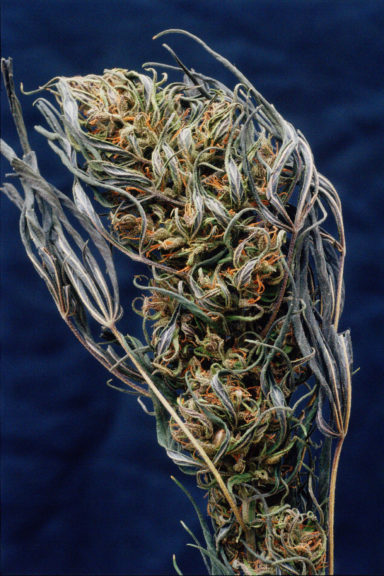
Purple Mexican, Oakland, CA, 1979 by Mel Frank
Though Frank now works in digital if he needs to, many of the images on display-including pioneering work in microphotography-were shot on film (his Leicas or OM1). The show, appropriately titled When We Were Criminals, is a blunt reminder of how American culture (our politicians and legislation are an expression of culture) is picking up the pace (not fast enough) to help us cross over the joint real and metaphysical threshold that prevents us from landing and living on the right side of history.
If you didn’t know already, Marijuana is now legal and sold a bit like alcohol in California (21 and older), though only in licensed shops. You still cannot toke up in public, however.
“All this was done with dire consequences if you were caught,” notes Frank, leapfrogging off the title of his show, still quite aware of how this is still shamefully the case in many places across the globe. “On the other hand, we weren’t the bad guys-the murderers, rapists and bank robbers,” he continues. “We were dealing with reality, with something we knew was good. The bad guys were the ones trying to catch us.”
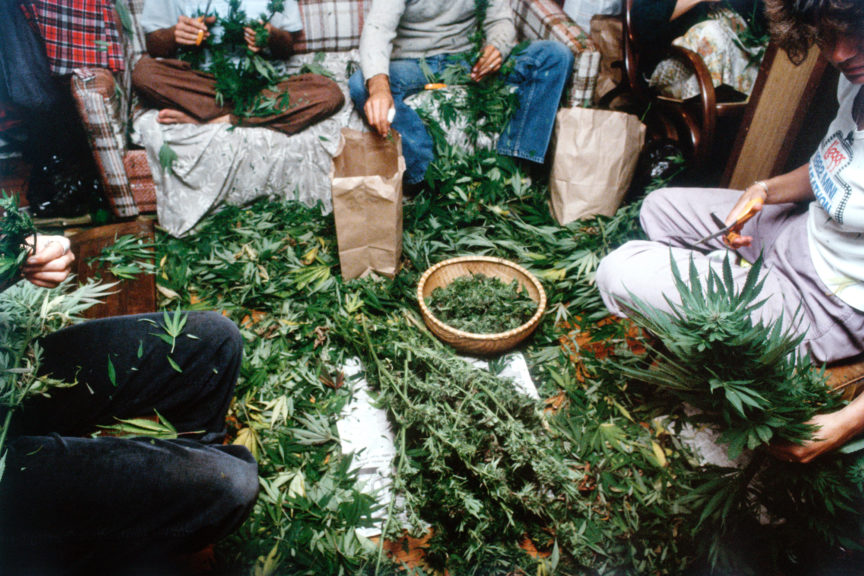
Manicuring, Dutchess County, NY, 1982 by Mel Frank
Luckily, they never did. However, the Kafkian confusion between State and Federal law continues to foster justifiable anxiety among modern growers and merchants. “It’s just a ridiculous situation,” notes Frank, echoing a fatigued sentiment millions of frustrated Americans share, especially those in the multi-billion dollar Marijuana industry walking this absurd bureaucratic tightrope. “[Attorney General] Jeff Sessions doesn’t understand the dynamics of any of this. He’s clueless.”
Frank’s been around long enough to see the cultural, legal, sociological, political and overall economic conversation (or lack thereof) around Marijuana ebb and flow since the late ‘60s. “We thought it would be legalized by 1980,” he says. “In the late ‘70s, the rumor was the tobacco companies were going to take over. They had already trademarked names like Acapulco Gold and Panama Red. But the genie was put back in the bottle. So I gave out seeds to anyone who visited us. Once these seeds are out there, there would be no stopping it.”
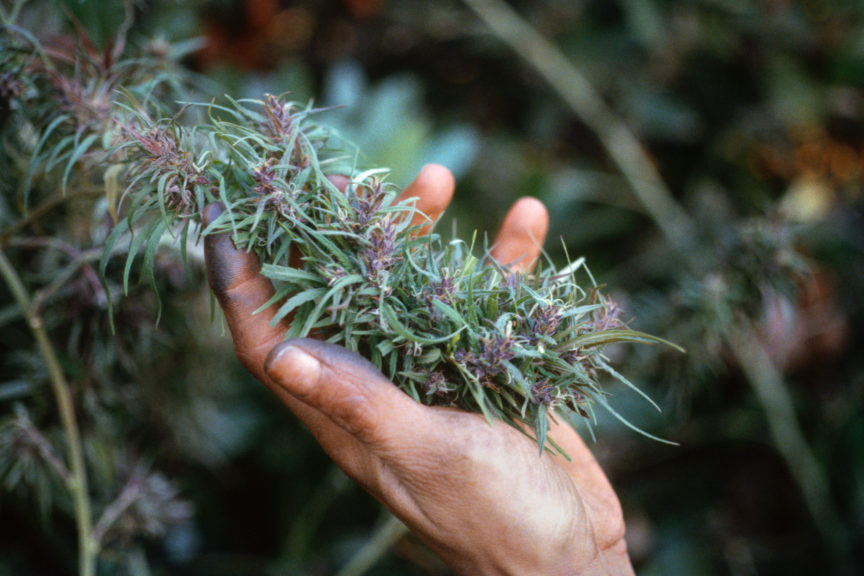
Finger-Rubbed Hashish, Calaveras County, CA, 1978 by Mel Frank
There is a high probably that many strains of weed currently being consumed in the States have direct ties to seminal varieties Frank started growing in his $125 dollar a month, seven-room apartment on Manhattan’s Upper West Side. “I first started smoking at the end of 1967, maybe the beginning of 68,” he recalls. “Shortly after that, I bought my first bag of Marijuana, which was filled with seeds.”
Frank (before he was Mel Frank) had been in the Navy. “I went in when I was 19 (1963) because I wasn’t sure what I wanted to do,” says America’s resident Johnny Cannabis-Seed. Frank grew up in Lynn, Massachusetts-a few miles north of Boston near the shore, but he soon found himself “shipboard” for most of his naval career; “a good three years.” He was an electronics technician, which involved radar and communications repairs, etc.
“It was a good gig because no one knew what you were doing so you could pretty much write your own ticket.” This included a lot of downtime reading several-month-old magazines and newspapers reporting how LSD and Marijuana were making unsuspecting landlubbers go blind or jump off rooftops. “I thought, ‘Probably not, but when I get out and get to NY, I have to get me some of that!’ ”
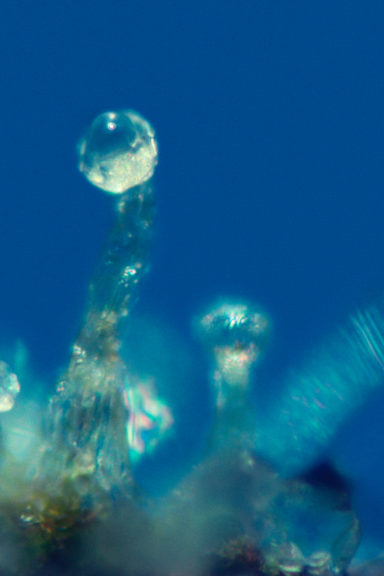
Capitate-Stalked Resin Gland, Thai Stick, Photomicrograph X100, 1979 by Mel Frank
He got out in September 1967 and returned to Lynn to spend a few months with his mom. “I parted with my dad at 15,” he interjects for clarity. “I lost him to ALS. But after a couple months, I moved to New York City and just fell into this apartment.”
And what an apartment it was (W 78th and Amsterdam). “I displaced Nico from The Velvet Underground,” says Frank in a casually tone. “Nico (German singer and Warhol superstar Christa Päffgen)was subletting and they were kicking her out. I happened to be in the right place at the right time.”
Frank began subletting Nico’s old room from the actor John Phillip Law. “He was in a number of movies,” he says before rifling off a couple. “There was, The Russians Are Coming, The Russians Are Coming(1966), Death Rides a Horse(67) or Barbarellathe following year. He did a lot of Spaghetti Westerns. He was a tall, handsome actor.”
The young, very green Frank claims that when Law returned from set and witnessed how he had cleaned the place up in remarkably militant fashion, he promised the young sailor he could “live there forever.” But forever wasn’t in the cards. In a few years, Frank would be heading west.
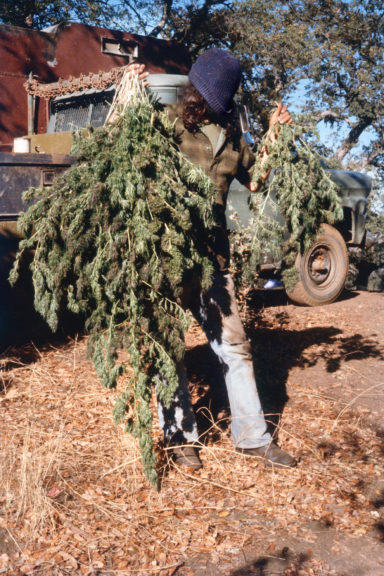
Mokelumne Hill, Calaveras County, CA, 1978 by Mel Frank
“It was an incredible time for me,” says Frank of his New York experience. “I ended up living with two women, my girlfriend and her best friend, who started working for Bill Graham who created the Fillmore East as well as the original [along with rock promoter Chet Helms] in San Francisco. Every week we went to a concert. The opening night at Fillmore East was Janis Joplin. I saw most of those people; Odetta, BB King, Richie Havens was a friend. I was a straight out of the navy kid. It was all very new to me. I had a great time then. We all did.”
Soon, word got out to the right people that this navy kid was growing the best indoor weed in the entire city and making it look easy, at a time when no one was doing it. Looking for a little extra cash and riding a wave of enthusiasm for his unique skill set, Frank penned a two-part article in the NY section of Rolling Stone about how to create a simple indoor grow-op. The piece was extremely popular for obvious reasons, boasting thousands of reprint requests. This is how Mel Frank met his first and perhaps most well known writing partner, Ed Rosenthal.
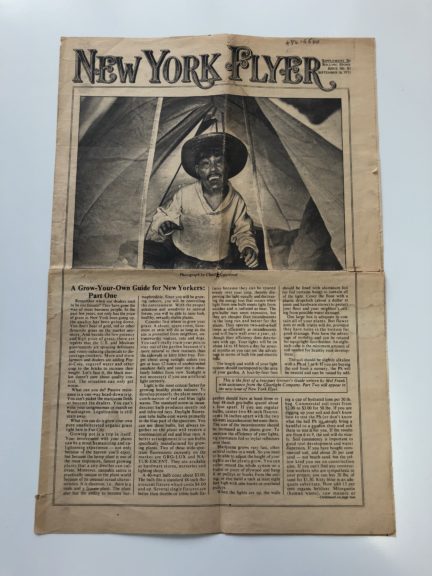
Mel Frank’s Rolling Stone article, “Grow Your Own Guide for New Yorkers: Part 1.
“The publisher gave him my info and he intruded into my life,” Franks says with a friendly laugh. “Within in five minutes he was saying we should write a book together. I wasn’t interested at the time, but he was very insistent and after about a year, I said ok.”
They began fleshing out the RS piece, turning it into a small, 94-page how-to manual, which was more a compilation of ideas than a writerly manifesto. Rosenthal felt he had enough material to lock in a publisher however. “Off he went,” remembers Frank. This was Level Press in San Francisco. The Indoor / Outdoor Highest Quality Marijuana Growers Guide eventually came out in ‘74 and started selling enough to warrant something bigger, better, more definitive.
In the interim, Frank began attending the City College of New York and buried himself in Biology classes-botany, microbiology. “I never had any intention of going onto more degrees,” claims Frank, despite racking up a bounty of credits. “I was done with it. That was the last thing I ever joined.”
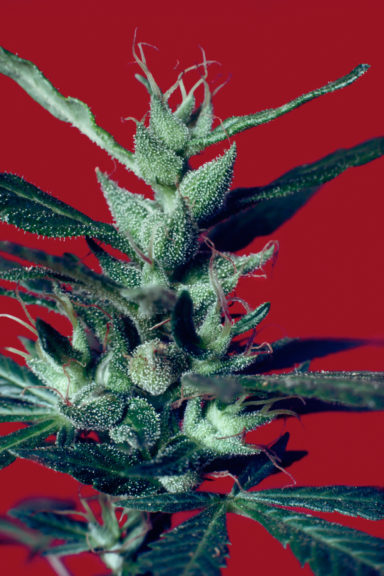
Seeded Colombian Landrace, Backyard, Oakland, CA, 1979 by Mel Frank
Frank and Rosenthal, in an effort to get more book-smart pre-internet, embraced the Dewey Decimal System, scouring the stacks for anything that dealt with Marijuana, cannabinoids, or hemp. Frank would cram his pockets with rolls of nickels for the photocopy machine. During this time, he fortuitously met Thomas King Forçade (also a playful alias), who started a little magazine called High Times, originally conceived as a Playboy parody for marijuana enthusiasts; “pot pornography.”
Frank began contributing to its earliest issues. Disappointed with the cover shot for his earlier book, he had begun exploring photography. He started contributing words and images. It should be noted, at this same point, the government was starting to get concerned about all these crazy hippy kids smoking grass and sticking it to the man.
By 1970, Marijuana would be labeled a Schedule-1 Drug after Congress passed the Controlled Substance Act. In 1972, Nixon ignored American States’ interest in decimalization and numerous studies such as “The Report of the Canadian Government Commission of Inquiry into the Non-Medical Use of Drugs,” which downplayed Marijuana’s effects. Instead, he created and deputized the DEA. Dr. Carlton E. Turner, a research associate at the University of Mississippi in 1970 who earlier advocated for Marijuana’s reasonably benign effects as an unbiased scientist and faculty member was later (1985) named Drug Tsar (Deputy Assistant to the President for Drug Abuse Policy) under Ronald Reagan.
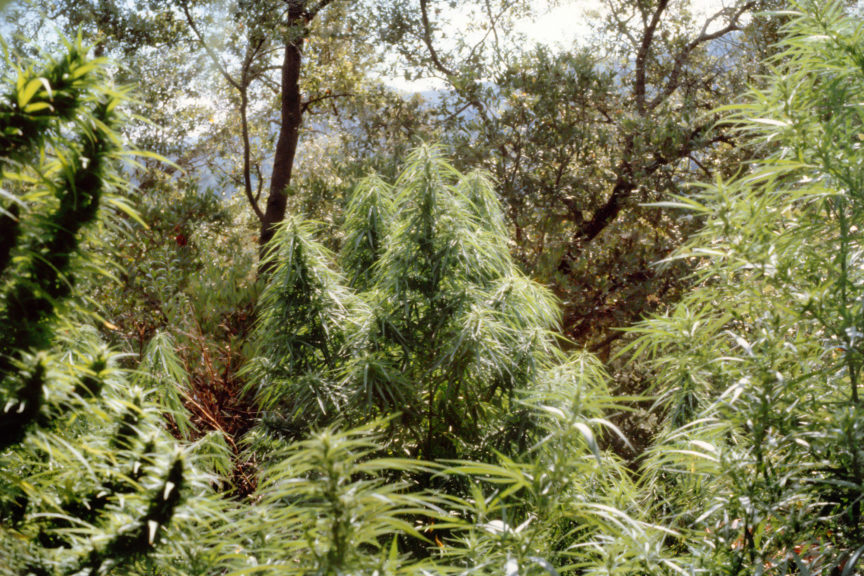
The Day of the Triffids, Sonoma County, CA, 1979 by Mel Frank
“The drug war was one of the worst things to ever happen to this country if you think about it,” says Frank. Over the last four decades, and in the early ‘90s especially (re: Operation Green Merchant), Frank saw a lot of people go down hard-friends and peers whose lives were destroyed in gross disproportion to the offense.
Young Mel, already a published author, graduated from CCNY in December of 1975. After a cross-country litmus test, Frank and Rosenthal permanently moved out West. “When I arrived on the West Coast, there were already some really good strains here-Haze, Skunk # 1,” he admits. “There was also a tradition in Cali and Hawaii that showed they knew what they were doing. I brought the idea that you could grow high-powered marijuana anywhere you lived-indoors, outdoors, wherever. That’s when people really started to grow.”
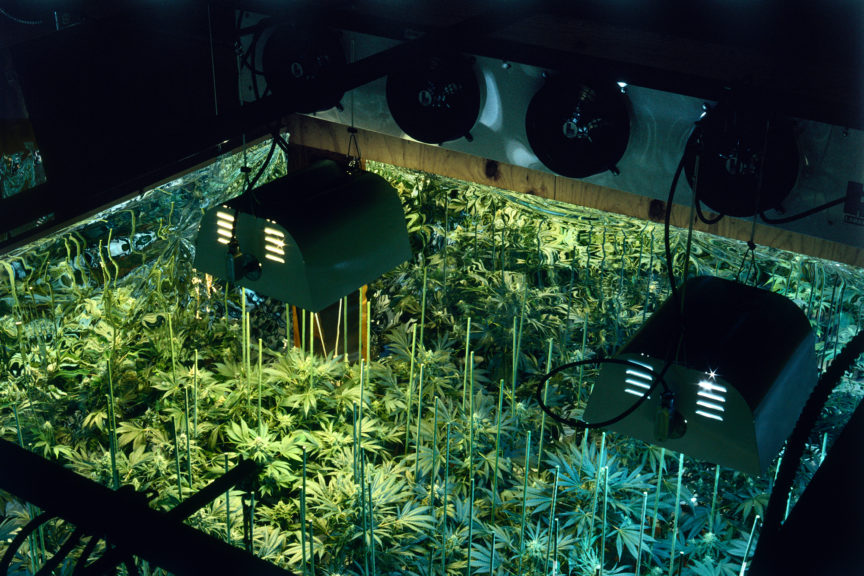
Trichome Technologies’ HPS Garden, Oakland, CA, 1998 by Mel Frank
In 1977-78, Frank and Rosenthal finally published their epic cannabis tome, Marijuana Grower’s Guide Deluxe. To this day, it remains “the bible of bud.” After a positive NYT review, all sorts of offers started coming in. Frank and Rosenthal purchased a house together “to avoid landlords” right next to the famed Haight-Ashbury district of San Francisco. There were admittedly some legal squabbles over royalties throughout the years, but they worked it out officially in the late ‘80s. Rosenthal went on to start his own successful publishing company, Quick Trading. Frank later did the same, publishing Marijuana Grower’s Insider’s Guide (1988) under his new banner, Red Eye Press.
“Ed Rosenthal holds the distinction of turning more people on to pot than Cheech and Chong,” Tommy Chong himself once claimed. If this is true, than Mel Frank holds the apex distinction of turning hoards of people onto the DIY culture of growing, now a mainstream enterprise. The pair remains friends and collaborators. Both continue to champion Marijuana’s medicinal capabilities as the true impetus for industry growth. Frank says friends 50 and up call and ask advice about how to deal with the “commensurate ailments and infirmities that come with the aging process.”
“I use some CBD myself,” says Frank. “I shoot pool with some old guys. We’re just fooling around now. I come onto a shot-a difficult uncomfortable shot to shoot-and I get literally anxious about it. A little CBD under my tongue, the anxiety goes away.”
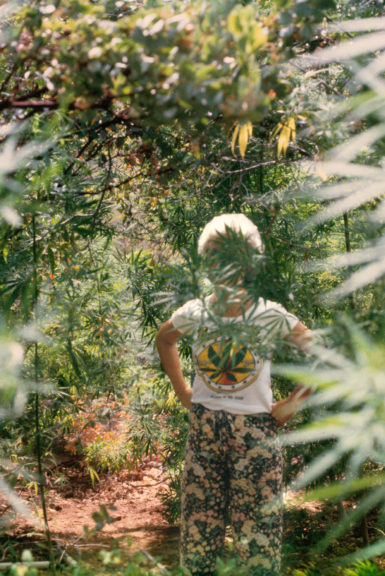
Freedom is the Issue T-shirt, Sierra Nevada Foothills, CA, 1979 by Mel Frank
Before touching on the exhibition, Franks notes that we’re only beginning to explore the miraculous medicinal capabilities of the various, under sung cannabinoids and acids lurking within “God Plant” as it’s called in the South Pacific. How long before the human species gets out of its own way?
Art and the spaces in which it’s housed can serve as a powerful catalyst to change the perception of individuals stuck in archaic or dogmatic ways of thinking. We’re seeing this with race and gender currently. Though most gallery goers at the M+B Photo opening were surely 4/20 friendly, perhaps a conservative layperson could access the conversation around Marijuana through Mel’s warm, fun, seductive, at times familial imagery. If that fails, talk to Mel, who clearly still has his shit together.
“I didn’t seek out the show,” he says. “The show sort of sought out me. A friend said to me, ‘By any other standards, these would be the worst photos in the world because you always cut peoples’ heads off.’ Nobody wanted their face in the shot!”
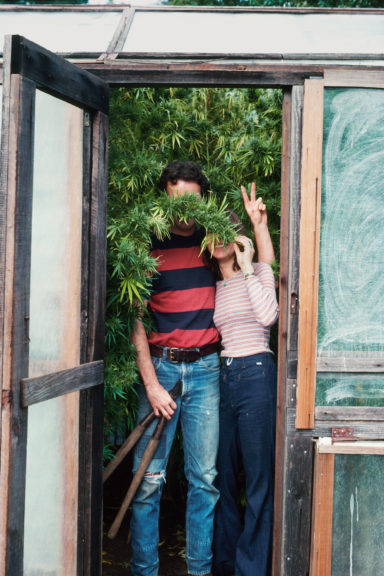
Freedom is the Issue T-shirt, Sierra Nevada Foothills, CA, 1979 by Mel Frank
Mel Frank: When We Were Criminals is currently on view at M+B Photo, located at 1050 North Cahuenga Boulevard in Hollywood, until June 9th. More information can be found at www.mbphoto.com

Kurt McVey began his journalism career as a prolific contributor to Interview Magazine where he covered emerging and established names in the art, music, fashion and entertainment worlds. He has since contributed to The New York Times, T Magazine, Vanity Fair, Paper Magazine, ArtNet News, Forbes, Whitehot Magazine, and many more. A Long Island native, McVey is also a successful artist, model, performer, entrepreneur, and screenwriter working out of NYC.

